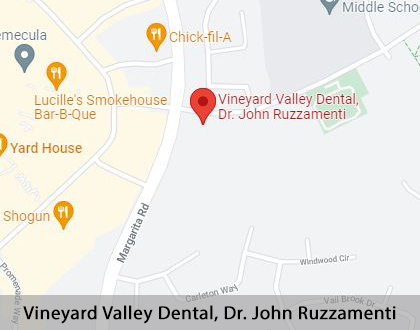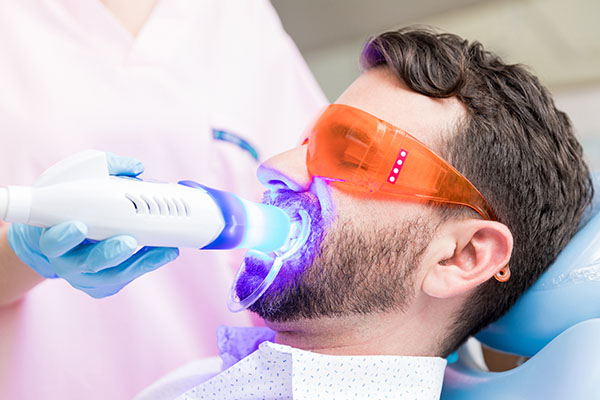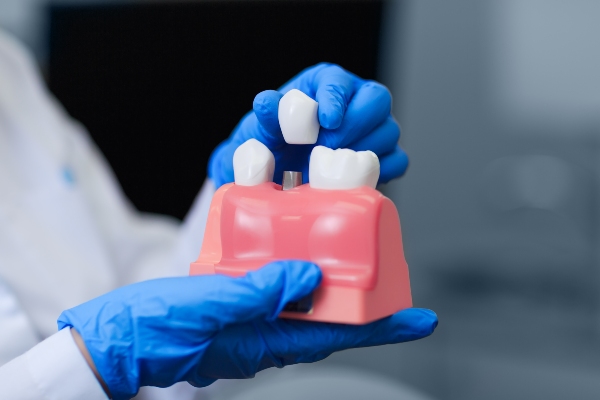Types of Dental Root Fractures Temecula, CA
Each layer of the tooth plays an important role in keeping your mouth healthy and happy. Whether it be from injury or general wear and tear, a dental root fracture can cause discomfort and pain. The sooner your tooth receives treatment, the better the outcome will be.
If you suspect that you have a fractured tooth, do not hesitate to protect your oral health. Our team at Vineyard Valley Dental in Temecula and the surrounding area can help. Contact us at (951) 707-4378 to learn more about our services or schedule an appointment.
Layers of the Teeth
The teeth consist of the enamel, dentin, and pulp. Enamel is the outer layer, which protects the inner layers of the tooth. The second layer is called the dentin, and it consists of tubules that act as a buffer between the enamel and the tooth’s innermost layer. The pulp is the last layer of the tooth and contains nerves and blood vessels that keep each tooth alive.
Proper maintenance of teeth is essential for protecting the different teeth layers. Even minor untreated fractures can result in severe issues. A tooth fracture will damage the enamel and cause the other layers of the teeth to become increasingly susceptible to harm. Patients with a fractured tooth should contact us as quickly as possible to protect their oral health.
“The teeth consist of the enamel, dentin, and pulp.”
Types of Dental Root Fractures
A tooth fracture occurs when there is a break in the hard shell of a tooth. Although the enamel acts as a shield against disease and bacteria, a fracture can compromise this protective layer. If a crack is deep enough, germs can penetrate the pulp cavity and cause an infection.
There are several types of dental root fractures, including:
- Oblique subgingival fractures
- Oblique supragingival fractures
- Oblique root fractures
- Vertical apical fractures
- Vertical furcation fractures
- Vertical root fractures
“Although the enamel acts as a shield against disease and bacteria, a fracture can compromise this protective layer.”
Oblique Fractures
Subgingival Fractures
Oblique subgingival fractures extend below the gum line. The severity of the fracture depends on how far it has gone past the gum line. These fractures are usually painful as the fractured tooth usually remains in the gums after it breaks off. However, patients may have a subgingival fracture for years before feeling any pain.
Supragingival Fractures
This type of oblique fracture only affects the tooth’s crown and does not extend below the gum line. Usually, a supragingival fracture results in the affected part of the tooth breaking off. Patients typically experience little pain as the nerves and blood vessels of the pulp remain intact and undamaged. Although this fracture may not cause immediate pain, it can lead to infection or pain in the future without treatment.
Root Fractures
Oblique root fractures do not usually affect the surface of the tooth at all. The damage occurs below the gum line, particularly under the bone. While this classification of fracture is not visible, it is very painful. Patients with oblique root fractures may require root canal treatment or extraction, depending on how close the fracture is to the tooth fracture.
“Oblique subgingival fractures extend below the gum line.”
Check out what others are saying about our dental services on Yelp: Types of Dental Root Fractures in Temecula, CA
Vertical Fractures
Apical fractures
Vertical apical fractures occur at the apex or tip of the tooth root. Many patients with vertical apical fractures ask for extraction because of the severe pain it causes. The severe pain is a result of tooth fragments placing pressure on the bone. Root canal therapy can help alleviate the pain, but some cases may require tooth extraction. Patients can discuss the best treatment option with our dentist.
Furcation fractures
When the roots of a tooth separate, a vertical furcation fracture occurs. This type of fracture almost always affects the tooth’s nerves. Patients affected by this fracture experience pain and difficulty with simple tasks like eating and speaking. Root canal therapy and a crown can usually save teeth affected by vertical furcation fractures as the tooth does not generally split completely.
Root Fractures
A vertical root fracture happens when part of the tooth root breaks off. This type of damage is not common and usually occurs in teeth with endodontic treatment like root canal therapy. An apicoectomy may save the tooth if the vertical root fracture is short. Extraction is usually the common treatment; however, various studies have attempted to reunite fractured roots with varying success rates.
“Vertical apical fractures occur at the apex or tip of the tooth root.”
Questions Answered on This Page
Q. What are the layers of the teeth?
Q. What are the types of dental root fractures?
Q. What are the types of oblique fractures?
Q. What are the types of vertical fractures?
People Also Ask
Q. Why would a tooth need to be extracted?
Q. How will my doctor help me prepare for my tooth extraction?
Frequently Asked Questions
Q. How can I prevent a dental root fracture?
A. Cracked teeth are not completely preventable. However, certain precautions can reduce the chances of a fractured tooth. Avoid chewing hard objects and refrain from clenching or grinding teeth. People that play contact sports should also wear a mouthguard or protective mask.
Q. What are the risks of dental root fractures?
A. Tooth fractures are more common in older adults as teeth wear down over time. Other factors that may increase the risk of dental root fractures include teeth with decay or damage, silver alloy restorations, or exposure to temperate extremes within a short time. People that chew on hard foods, play collision sports, or grind or clench their teeth also have a greater risk of fracturing their teeth.
Q. What are the symptoms of dental root fractures?
A. Not all people with dental root fractures will experience symptoms. While some fractures will rarely cause problems, other fractures may expose the sensitive tooth pulp to debris and bacteria in the mouth. This exposure causes inflammation or infection, leading to pain while chewing, sensitivity to temperature or sweetness, and swollen gums around the affected tooth.
Q. How is a dental root fracture diagnosed?
A. Fractures may be difficult to diagnose with the naked eye. We will ask patients about their symptoms and look for the fracture based on their feedback. We may also use dye staining, transillumination, periodontal probing, bite tests, or X-rays to locate the fracture and the extent of the damage.
Q. How are dental root fractures treated?
A. Dental root fractures do not heal on their own. The goal of treatment is to protect the tooth and the pulp. Treatment options will depend on how severe the tooth damage is. Options include crowns, dental veneers, root canal treatment, tooth extraction, and removal of the tooth’s fractured portion. Patients can speak with our dentist about the best treatment option for their needs.
Quality Dental Services Can Transform Your Smile
By visiting us as soon as possible, our team can help get you the professional treatment you need. Instead of waiting around and allowing the symptoms to get worse, we can provide you with treatment options.
Endodontic Terminology
Call Us Today
Fractures are common and painful problems that require treatment as quickly as possible. Vineyard Valley Dental can help find the right treatment option for you. Call us at 951-707-4378 to schedule an appointment or learn more about our services.
Helpful Related Links
- American Dental Association (ADA). Glossary of Dental Clinical Terms. 2021
- American Academy of Cosmetic Dentistry® (AACD). Home Page. 2021
- WebMD. WebMD’s Oral Care Guide. 2021
About our business and website security
- Vineyard Valley Dental was established in 2002.
- We accept the following payment methods: American Express, Cash, Discover, MasterCard, and Visa
- We serve patients from the following counties: Riverside County
- We serve patients from the following cities: Temecula, Murrieta, French Valley, Lake Elsinore, Fallbrook, Winchester, Hemet and Menifee
- Norton Safe Web. View Details
- Trend Micro Site Safety Center. View Details








